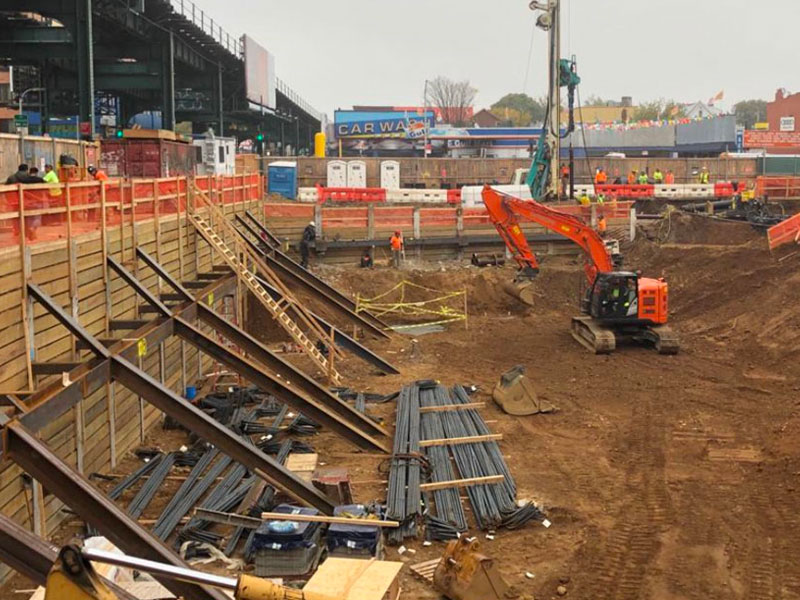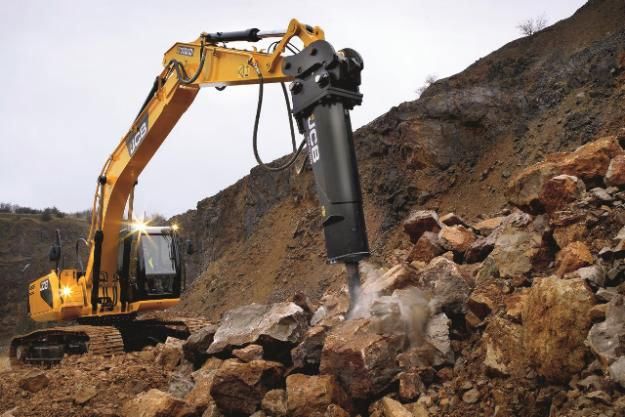Dump Truck Companies in Ohio - Trusted Dump Truck Services Across Ohio
Dump Truck Companies in Ohio - Trusted Dump Truck Services Across Ohio
Blog Article
Unveiling the Art of Excavation: Pro Tips for Safe and Efficient Digging
As soil is turned and planet is moved, the details of excavation expose themselves, demanding an eager understanding of tools, dirt composition, safety and security protocols, and ecological factors to consider. The proficiency needed to browse these elements properly can suggest the difference between an effective excavation job and a possible calamity.
Value of Correct Tools
To guarantee the security and performance of any excavation job, utilizing the ideal equipment is critical. The right tools not only boost productivity however likewise minimize dangers associated with digging. Excavation jobs differ in range and complexity, ranging from tiny residential landscaping tasks to large construction undertakings. Regardless of the job dimension, having the proper equipment can make a substantial distinction in the end result.
Excavators are essential pieces of machinery in any type of digging operation. These versatile machines come in numerous sizes to fit different job needs. Tiny excavators are excellent for smaller sized jobs, while larger excavators take on more comprehensive projects efficiently. Backhoes are one more important devices type, combining the features of a loader and an excavator in one machine. They are valuable for tasks requiring convenience and maneuverability.
Aside from excavators, various other vital equipment consists of dump trucks, excavators, and plates. Dispose trucks are essential for eliminating and delivering excavated materials, while plates are utilized for excavating narrow and deep trenches. Bulldozers master tasks that call for pressing huge quantities of dirt or debris. By purchasing the suitable equipment, excavation tasks can be completed safely, on time, and with accuracy.
Comprehending Dirt Composition
A detailed understanding of soil structure is basic for performing excavation jobs with accuracy and safety. Comprehending the various sorts of soil is critical as it directly impacts excavation techniques, equipment choice, and total task efficiency. Soil composition commonly includes four primary elements: sand, silt, clay, and natural issue. Each element has special residential or commercial properties that influence exactly how soil reacts to excavation processes.
Sand particles are the largest and supply great drain yet provide little cohesion. Silt particles are smaller sized than sand yet bigger than clay, supplying moderate water drainage and communication. Clay bits are the smallest and provide high communication however inadequate drain. Organic matter, such as decaying plant material, influences soil fertility and stability.
Before beginning excavation, performing dirt examinations to determine its composition and attributes is important. This information assists in picking the proper equipment, implementing precaution, and creating excavation techniques tailored to the certain soil problems - lancaster trenching. By comprehending dirt structure, excavation specialists can improve task results while ensuring safety and security and adherence to best methods
Security Measures and Methods
Recognizing soil structure is the cornerstone upon which precaution and protocols for excavation tasks are developed, making certain the well-being of employees and the success of the undertaking. There are a number of vital measures that must be implemented to alleviate dangers and stop crashes. when it comes to safety during see this site excavation.
Most importantly, before any digging begins, a complete inspection of the website ought to be performed to identify any potential risks such as below ground energies, unpredictable soil problems, or neighboring frameworks that might posture a danger. It is crucial to have an experienced individual look after the excavation procedure to make certain that all safety procedures are complied with strictly.
In addition, all employees involved in the excavation must be appropriately trained in secure excavating methods and the appropriate operation of tools. By adhering to these security steps and methods, excavation jobs can be finished effectively and without case.
Effective Excavation Planning
When getting started on an excavation project, precise preparation is essential to make sure effectiveness, safety, and effective outcomes. Efficient excavation preparation involves numerous key actions that are essential for the smooth execution of the task.
Once the site analysis is complete, the following action is to create a clear timeline and schedule for the excavation activities. This consists of More Help figuring out the sequence of tasks, devices demands, and workforce allocation. Appropriate organizing helps avoid delays and makes certain that the project remains on track.

Additionally, interaction amongst all employee is extremely important during the preparation phase. Clear directives, routine updates, and efficient control are important for a successful excavation project. By spending time and effort in thorough planning, excavation groups can significantly enhance productivity, reduce risks, and achieve effective end results.

Handling Environmental Considerations
With increasing focus on environmental sustainability in construction techniques, managing environmental factors to consider has ended up being a vital element of excavation projects. Excavation tasks have the possible to impact the surrounding setting via soil erosion, debris runoff, environment disruption, and contamination of water resources. To mitigate these threats, it is important to execute ideal techniques that prioritize environmental management.

Moreover, correct waste management is critical to stop dirt and water contamination. Carrying out treatments for the disposal of unsafe products, recycling of waste products, and reducing using damaging chemicals can considerably decrease the environmental impact of excavation tasks. By integrating these methods right into excavation planning and execution, construction companies can make sure that their jobs are not only risk-free and productive but additionally eco responsible.
Conclusion
In verdict, grasping the art of excavation calls for a complete understanding of correct tools, dirt structure, precaution, and effective preparation. By following these standards and considering environmental factors, excavations can be performed safely and successfully. It is essential to focus on security and productivity in every digging project to ensure successful end results.
As dirt is turned and earth is relocated, the ins and outs of excavation expose themselves, requiring a keen understanding view website of tools, soil structure, safety methods, and environmental factors to consider.To guarantee the safety and security and effectiveness of any kind of excavation task, using the suitable devices is extremely important.An extensive understanding of soil make-up is fundamental for carrying out excavation tasks with accuracy and safety. Understanding the different kinds of dirt is vital as it directly affects excavation approaches, devices option, and overall project performance. By recognizing dirt composition, excavation experts can boost project outcomes while making sure safety and adherence to best methods.
Report this page